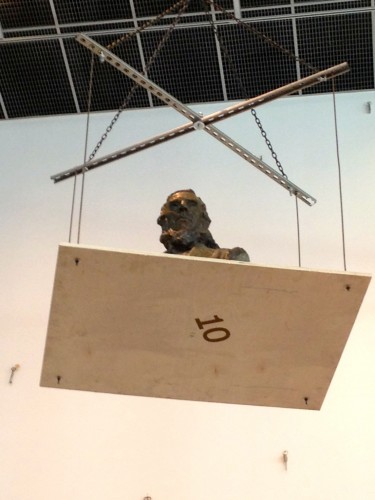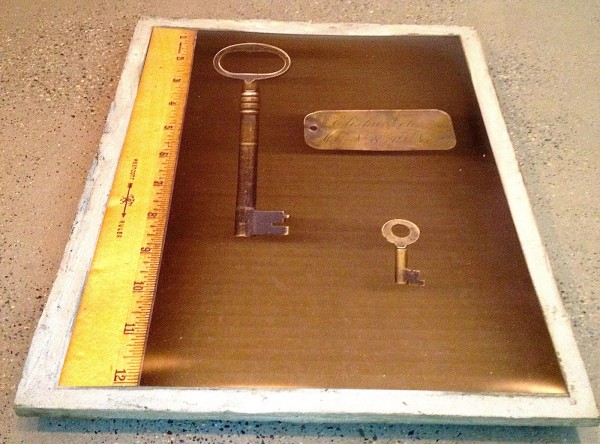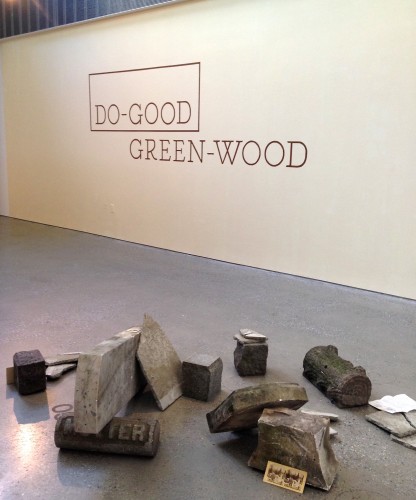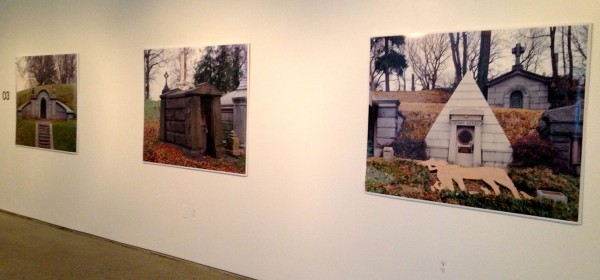Back in April of last year, I led a tour of Green-Wood for a class of Cooper Union students. At the end of the tour, their instructor, Michael Dorsch, asked me to show them our display of 19th-century vault keys in our offices. I did so and the students were fascinated. In fact, I soon heard from the one of them, Troy Kreiner, who was interested in doing some sort of project with the keys. We agreed on the following: Troy would capture images of the keys, creating a visual catalogue of them–the small keys that opened the iron gates, the larger brass keys for the granite doors, and the engraved tags that bore the family name.
So Troy began experiments to capture images of the keys. First he tried a camera, then a scanner. The results from the scanner were quite impressive: the keys seemed to float in space.
And out of this Key Project grew Troy’s senior exhibition at Cooper Union: “Do-Good Green-Wood.” It opened on September 17 and closes tomorrow. It is quite impressive–a demonstration of skill and creativity.
As Troy explained in the key to the exhibition, he decided to celebrate Green-Wood’s 175th anniversary with a theme of three do-gooders at Green-Wood, “an effort to further the philosophical notion of altruism:”
Mary Foote Henderson (1842-1931), who donated land around Washington, D.C. to be turned into a park and library, and was an early advocate for healthier eating; Henry Bergh (1813-1888) founder of the American Society for the Prevention of Cruelty to Animals; and Louisine Havemeyer (1855-1929), a significant member of the suffragiest movement in NYC, as well as a major art collection and donor to the Metropolitan Museum of Art.
Green-Wood lent Troy blueprints of mausoleums, keys to about 40 mausoleums, a plaster bust of Peter Cooper (the founder and benefactor of Cooper Union), and material from our collections (including photographs of the grounds, portraits, and woodcut prints).

Troy printed some of his key scans and his photographs of the mausoleums:

He added plants and even two birds in a cage to give visitors a bit of a feel of being outside on Green-Wood’s grounds. He borrowed gravestones from the scrap heap of the Brooklyn Monument Company, on 25th Street near the cemetery’s entrance. He painted the exhibition title, freehand and with great skill, on the wall–an effort that, in and of itself, took days.

He also made very large prints of each of the mausoleums of the featured individuals:

And there were photographs of the subjects: here’s a display devoted to Henry Bergh, the founder of the ASPCA, the first humane organization in the Americas:

It was a win/win situation. Green-Wood now has a great visual catalogue of its 700 plus sets of vault keys. And Troy got great experience and the opportunity to create a unique exhibition.
What a unique and well executed project. I hope your grade was at LEAST and A+. Well done Mr. Kreiner!
Today, as I was reading the comment in the OLD FARMER’S ALMANAC for Sept 27, I was intrigued by the entry concerning the SS Arctic and SS Vesta collision of 1854. This led me, eventually, to the Green-Wood Cemetery site because of the Browm monument in honor of the family members who perished in the sinking of the SS Arctic. My congratulations to Troy Kreiner for developing this exhibition of various facets related to the monument as well as to other burial sites of well known US entities. The key displays and background information was certainly a “key” to much more of importance. When I was an art student at Pratt Institute, Brooklyn, in the 60s, I became familiar with the Green-Wood Cemetery and find this additional information a most satisfying addition to my knowledge.Thank you also for presenting this blog site which gives me more information in satisfying my curious mind. Projects such as this provide important historical information and insight for future generations to utilize. Thank you.
Thank you!